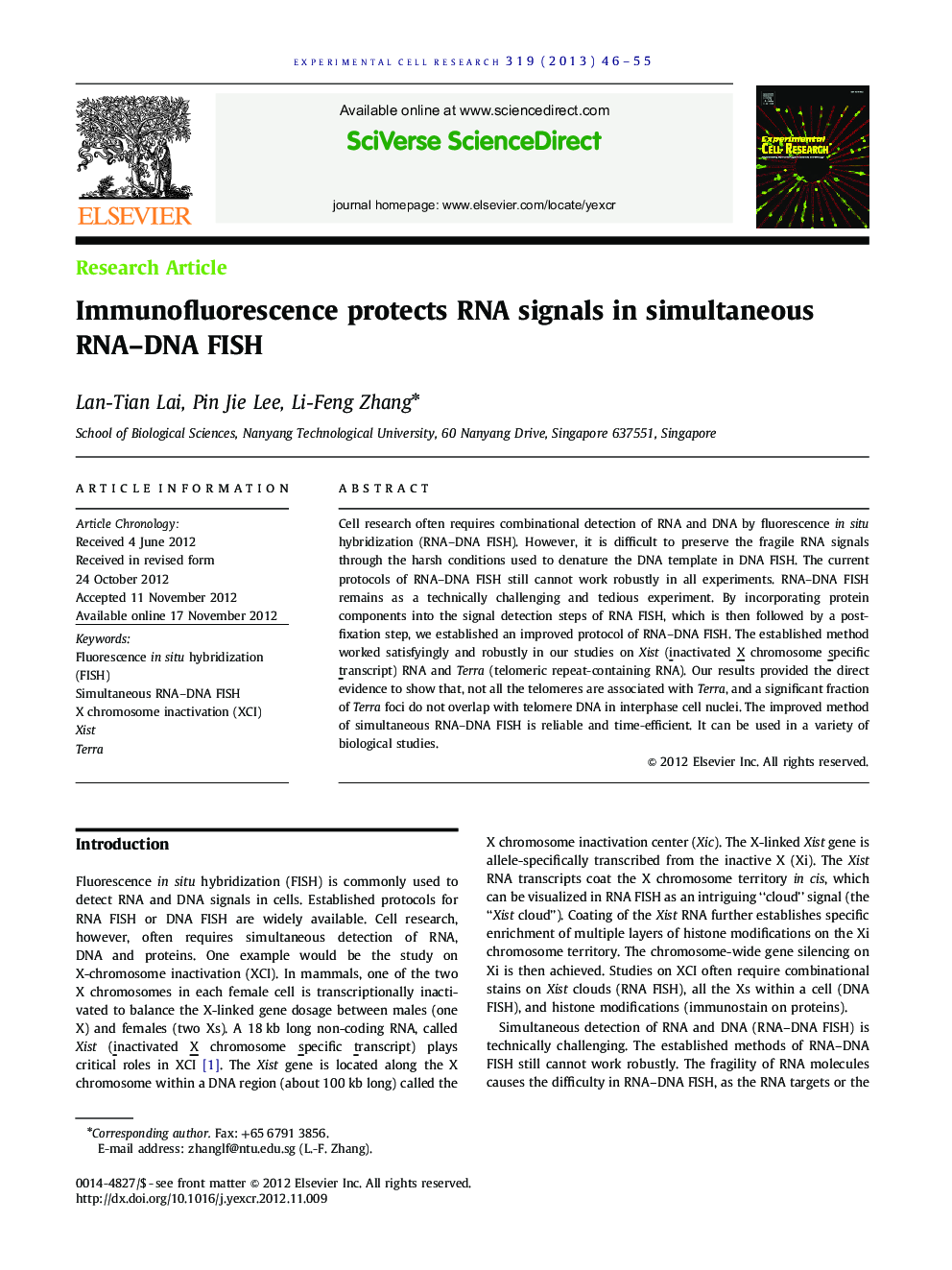| Article ID | Journal | Published Year | Pages | File Type |
|---|---|---|---|---|
| 2130565 | Experimental Cell Research | 2013 | 10 Pages |
Cell research often requires combinational detection of RNA and DNA by fluorescence in situ hybridization (RNA–DNA FISH). However, it is difficult to preserve the fragile RNA signals through the harsh conditions used to denature the DNA template in DNA FISH. The current protocols of RNA–DNA FISH still cannot work robustly in all experiments. RNA–DNA FISH remains as a technically challenging and tedious experiment. By incorporating protein components into the signal detection steps of RNA FISH, which is then followed by a post-fixation step, we established an improved protocol of RNA–DNA FISH. The established method worked satisfyingly and robustly in our studies on Xist (inactivated X chromosome specific transcript) RNA and Terra (telomeric repeat-containing RNA). Our results provided the direct evidence to show that, not all the telomeres are associated with Terra, and a significant fraction of Terra foci do not overlap with telomere DNA in interphase cell nuclei. The improved method of simultaneous RNA–DNA FISH is reliable and time-efficient. It can be used in a variety of biological studies.
► Including proteins into the signal detection of RNA FISH is crucial for RNA–DNA FISH. ► Following this principle, we established an improved protocol. ► We solved the side effects that the well-preserved RNA FISH signals may cause for the DNA FISH. ► The improved protocol provides reliable and satisfying results.
